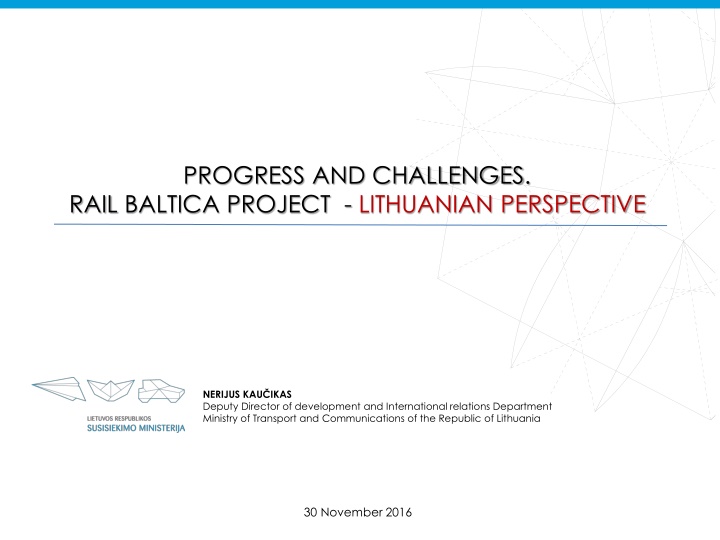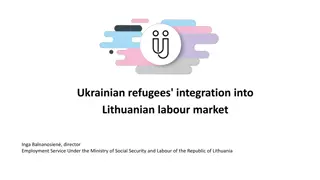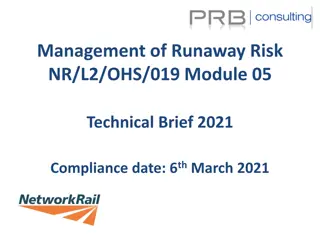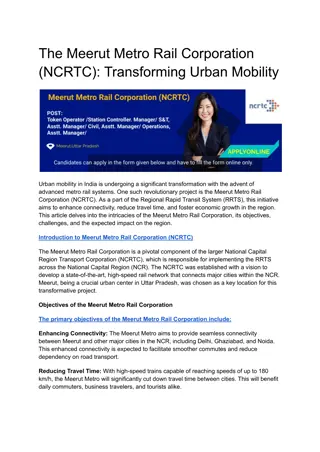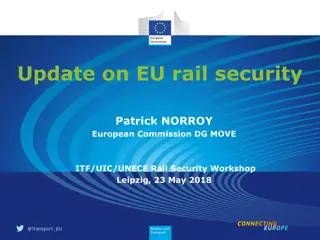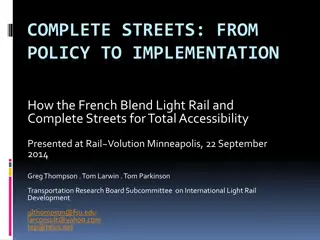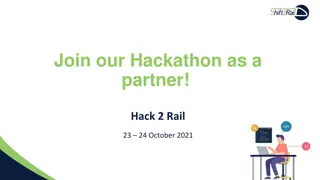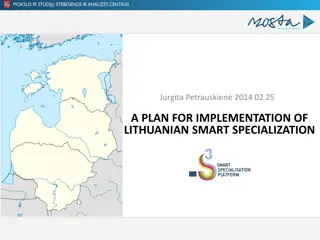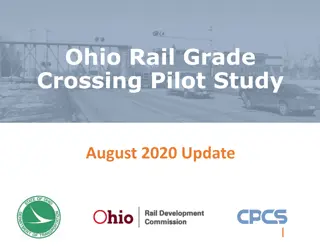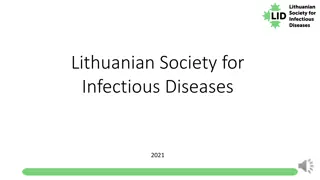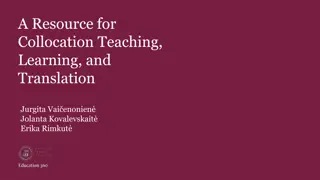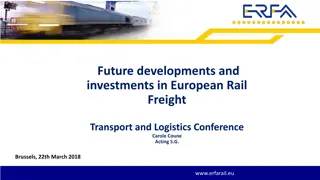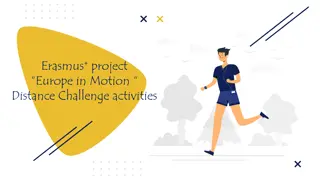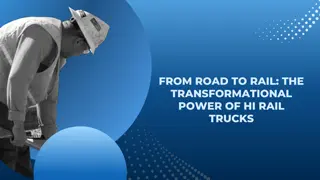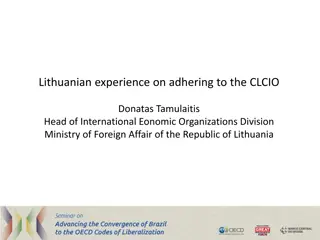Progress and Challenges of Rail Baltica Project - Lithuanian Perspective
The Rail Baltica project in Lithuania has seen major developments in 2016, with defined routes, secured EU funding, and construction contracts initiated. Challenges and opportunities such as smooth project implementation, securing EU funding beyond 2020, and innovative financial instruments need to be addressed for successful completion. The railway network positioning and future objectives till 2025 across Baltic states are also discussed.
Download Presentation

Please find below an Image/Link to download the presentation.
The content on the website is provided AS IS for your information and personal use only. It may not be sold, licensed, or shared on other websites without obtaining consent from the author.If you encounter any issues during the download, it is possible that the publisher has removed the file from their server.
You are allowed to download the files provided on this website for personal or commercial use, subject to the condition that they are used lawfully. All files are the property of their respective owners.
The content on the website is provided AS IS for your information and personal use only. It may not be sold, licensed, or shared on other websites without obtaining consent from the author.
E N D
Presentation Transcript
PROGRESS AND CHALLENGES. RAIL BALTICA PROJECT - LITHUANIAN PERSPECTIVE NERIJUS KAU IKAS Deputy Director of development and International relations Department Ministry of Transport and Communications of the Republic of Lithuania 30 November 2016
Major developments in 2016: Rail Baltica Route from Kaunas to Latvian border has been finally defined. Significant part of the EU funding for Rail Baltica activities secured with the II CEF Grant Agreement. Construction contracts and tenders for 1435 mm line around Kaunas node are launched. Principal debate on accomplishment of Rail Baltica railway took place in Parliament with consensus reached and vested interest in Intergovernmental Agreement on the subject.
Challenges and Opportunities (I) A smooth implementation of the project nationally [e.g., land expropriation after defining the Route]; To put Joint Venture RB RAIL on tracks; Harmonization of development plans between the Baltic states and Poland;
Challenges and Opportunities (II) The EU funding beyond 2020 has to be secured at highest possible rate; Business case behind Rail Baltica (revenues and maintenance); Employment of innovative financial instruments what this implies? Rail Baltica a matter of national and pan-Baltic security.
About positioning Baltic states railway network 1524 mm 1520 mm EU 1435 mm CIS 1668 mm 6
Till 2020 (according CEF applications) Till 2025 Till 2015 Muga Constructed railway lines Tallinn Constructed/reconstructed stations (buildings and other infrastructure) Estonia total 1,3 bill. Constructed freight terminals - till 2020 215 mill. (CEF 177 mill. ) Constructed/reconstructed depots - till 2025 1,1 bill. P rnu The target objective for 2025. Latvia total 1,9 bill. - till 2020 294 mill. (CEF 240 mill. ) Riga - till 2025 1,6 bill. Airport Panev ys Lithuania total1,6 bill. 3,2 bill. with the new railway line Jiesia-LT/PL and Vilnius spur - till 2015 391 mill. (EU funds 238 mill. ) - till 2020 231 mill. (CEF 197 mill. ) - till 2025 1,0 bill. 2,6 bill. with the new railway line Jiesia-LT/PL and Vilnius spur Kaunas Palemonas Vilnius Implementation of these projects depends on progress of RB railway line reconstruction in Poland, European Commission decisions, traffic volumes in RB corridor, funding opportunities.
Location on TEN-T network TEN-T Rail Baltica
Biaystok Trakiszki (PL/LT border) 197 km Financing: to be decided Cost: to be defined by Feasibility Study Start date: tender 2016 depending on finance availability End date: 2021 (if started in 2016) Effects: o to be defined in Feasibility Study Finalization of the Feasibility Study in April 2016. Modernization option and costs will be know and activities in order to ensure financing will start.
